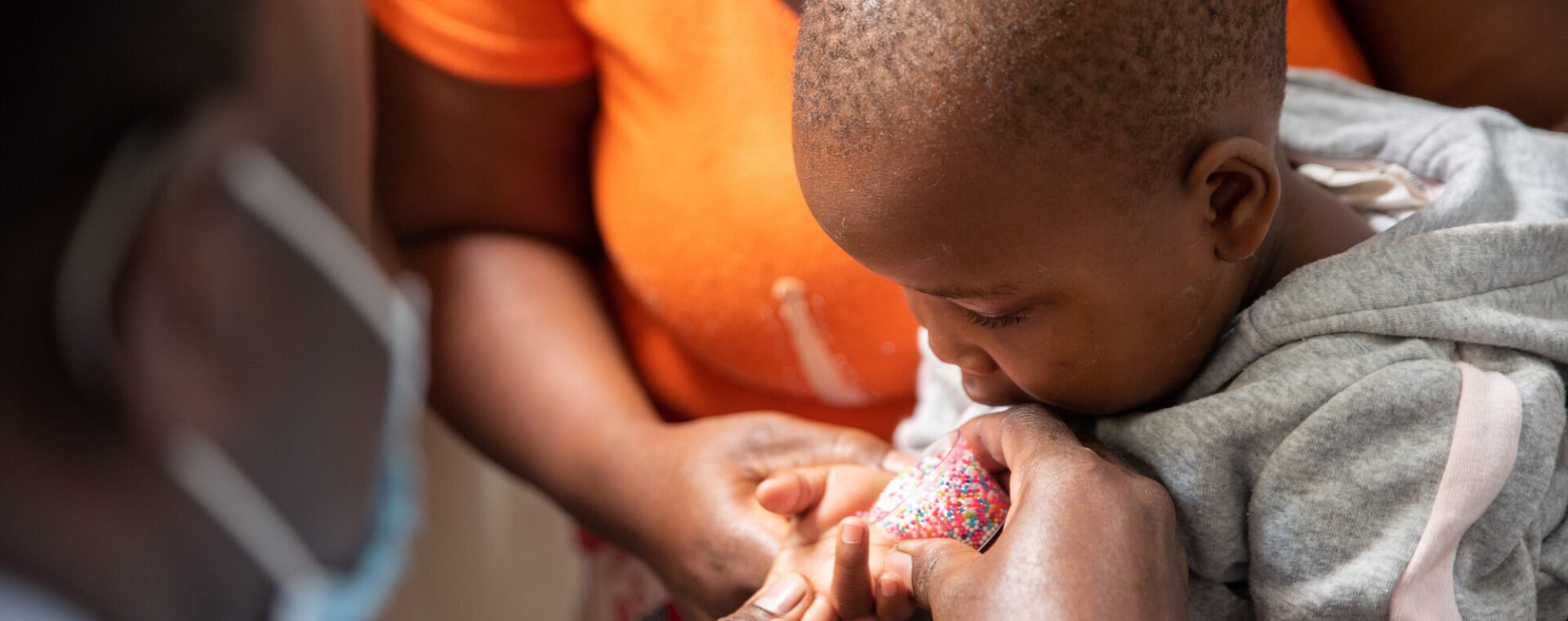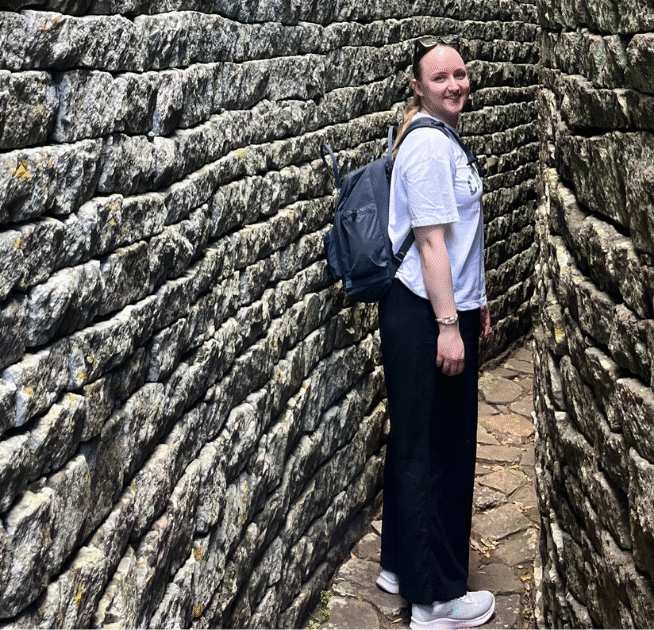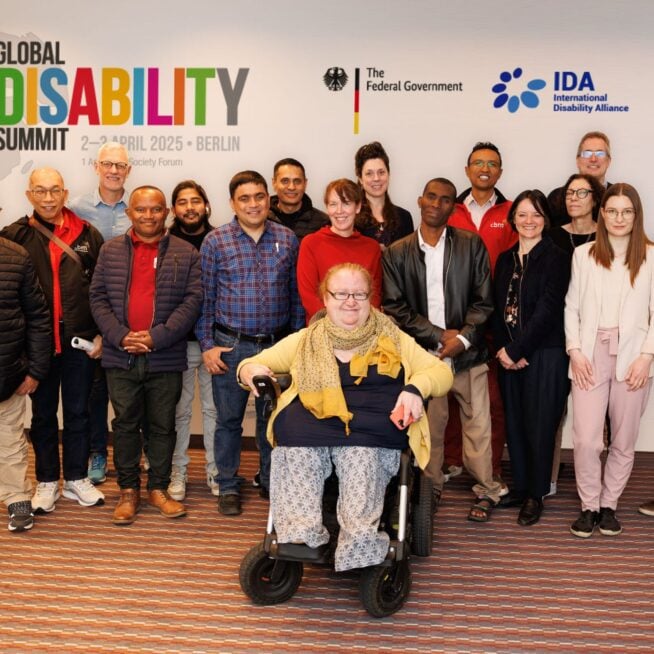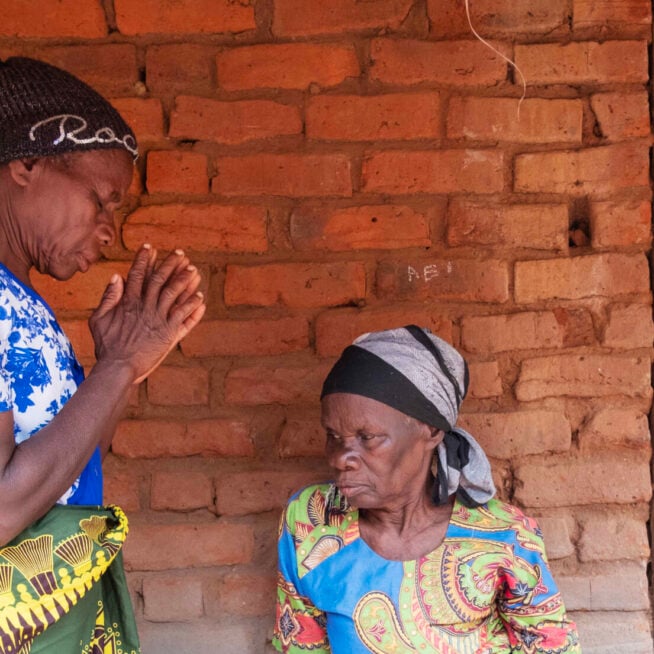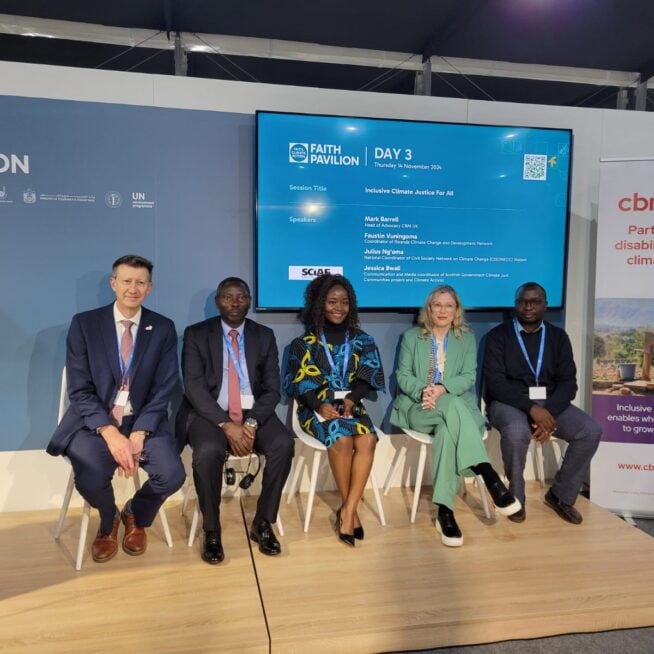Want to transform lives with us? Stay in touch and hear about our news, activities and appeals by email!
Meeting the Ambition of the new FCDO Disability Inclusion & Rights Strategy
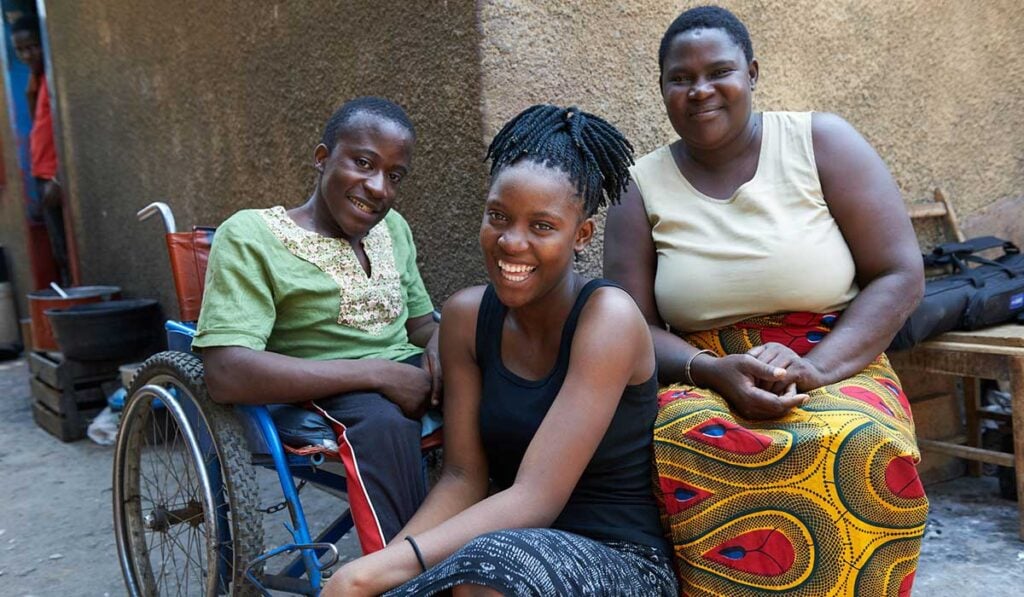
The FCDO reaffirmed its commitment to be a global leader on disability inclusion through the release of its recent and well received Disability Inclusion and Rights Strategy (2022-2030) (Gov website – open in new tab). The strategic intent is to meaningfully engage, empower and enable people with disabilities to exercise and enjoy their full rights and freedoms on an equal basis with others. As advocates for disability inclusion and equity, CBM UK stands ready to fully support the UK government in meeting this refreshed ambition. Of course, as ever, the devil is in the detail. How exactly will impact be achieved for persons with disabilities, and what mechanisms are suggested in the strategy to enable its progressive delivery?
Our first blog welcomed the new strategy, provided an overview of the key interventions and enablers to mainstream disability inclusion, but recognised that trust within the sector also needed to be re-engaged.
This second blog examines whether the strategy provides a strong enough sense of its delivery roadmap? Can we begin to see clear priorities, and targets? Where is the finance? How will collaboration and partnership with the disability movement work? Who and how will the strategy be monitored and reported? And, what mechanisms will enable lesson learning and sharing? Of course, much of this requires time to work through, but does the document give enough detail to dispel potential scepticism among development partners still reeling from structural shifts to UK Aid in recent years?
Importantly, the strategy references a delivery plan, which will set out initial priorities. So much hangs on this to show how strategic ambitions will be met and to locate our entry points to support, challenge and enable FCDO in meeting them. Positively the strategy states that the delivery plan will be developed in ‘meaningful participation with people with disabilities and their representative organisations’. This is fundamental and we are keen to hear more on this soon.
FCDO highlights ‘Living our values’ and leading by example. Aspirations to empower, equip and enable its employees with disabilities is central to this and a further delivery plan is intended. This second delivery plan is talked about with particular clarity – it will be aligned with the FCDO Inclusion Framework and expertise is identified that will be drawn on to meet 6 clear overriding goals. Assuming this is put into the public realm, its development and roll out will be easy to reflect upon, support and draw lessons from.
FCDO positively articulates the importance of being in line with local needs, indeed much of this well-written strategy resonates strongly with 3 overarching messages we heard at the recent Global Disability Summit 2022 (open in new tab):
- Disability data remains a huge gap that must be filled: FCDO identifies ‘visibility’ as one of its four priority outcomes for disability inclusion. Lack of reliable data is identified as a “significant barrier to exposing the scale of systematic exclusion and discrimination”, and it commits to strengthen use of measurement tools such as the Washington Group questions (WGQs) (open in new tab). Referencing humanitarian settings, FCDO promotes new e-learning on how to use the WGQs and an improved evidence base of what works. Disaggregated data is important, but so too is strengthened research on disability intersectionality to understand both where to target but also how to design and deliver disability inclusive approaches. The strategy references excellent FCDO funded research that is already well underway, but is quiet on what might follow or additional support towards gap filling.
- Persons with disabilities and their representative organisations must be in the driving seat: Much in the strategy reinforces this message. FCDO talks of supporting development solutions which are “informed by and respect people with disabilities’ lived experience, expertise, and knowledge on what works to transform their own lives”. A key enabler is ‘strengthening OPDs’, which is weaved through the key interventional areas, whilst committing to partnering “with OPDs in the delivery of programmes and policy objectives and implement feedback mechanism”. The drafting team itself engaged in consultations with over 100 OPDs, but what does it mean for a bilateral donor to work in partnership with OPDs beyond consultation? Indeed, what does partnership mean (and feel like) from the perspective of OPD partners, so that ambitious talk of promoting, encouraging, enabling, creating is meaningful? A true demonstration of how foundational the FCDO commitment is to strengthening OPDs would be seeing structural changes to funding that allow OPDs to really be in the driving seat. Will the resources OPDs need, (including technical and operational capacity, data and information, finance, human resources) really be forthcoming?
- Accessible financing is required and needs to reach the local level: Although not identified as a “key enabler”, financing is absolutely critical – so where does this sit in the strategy? We repeatedly heard the need to get more funding directly to grassroots organisations at GDS22. The path to them from donors is typically long, with cumbersome processes to access funds and financing mechanisms with expectations often mismatched. The FCDO strategy seems to recognise the need for more direct funding and it is exciting to see a reference to ‘participatory grant making with OPDs’. But trust based relational partnership is key to what are often viewed as risky investments. Whilst it is currently very difficult to envisage FCDO directly funding grassroots OPDs, the strategy gives a nod to this direction of travel. We need, however, much more detail on how FCDO sees its funding aligning with a more locally driven approach.
Commitments to partner with and strengthen OPDs needs to be balanced with accountable delivery and joint learning. The indicative MEL framework needs to match the ambition of the strategy, but it currently feels somewhat disjointed and lacking in depth. While an excellent move to create an External Delivery Board, greater scrutiny and accountable delivery needs to be planned for in order to translate bold words into actions and help push strategic priorities, such as accessible funding. We are keen to support the success of the new FCDO strategy, whilst continuing to push for increased specificity around delivery mechanisms and operational coherence through targets, funding and accountability to partners, including OPDs.
Image: Wheelchair user, Dabwiso (19), at home with his mother and sister, in Zambia. He was born with spina bifida and now attends a boarding school after receiving support from CBM’s local partner. ©CBM/argum/Einberger
